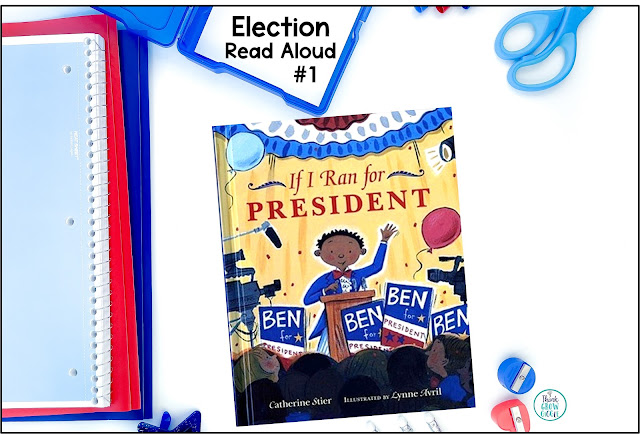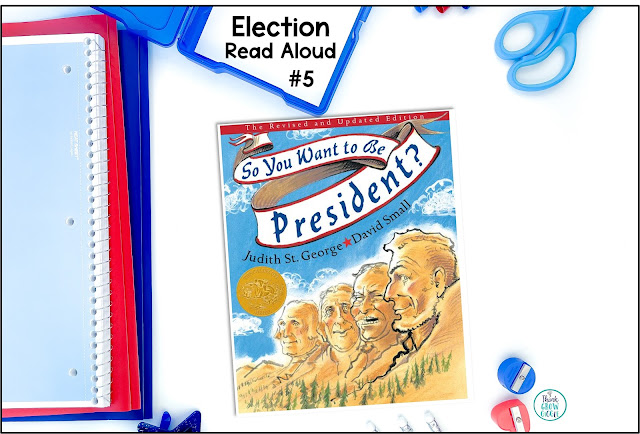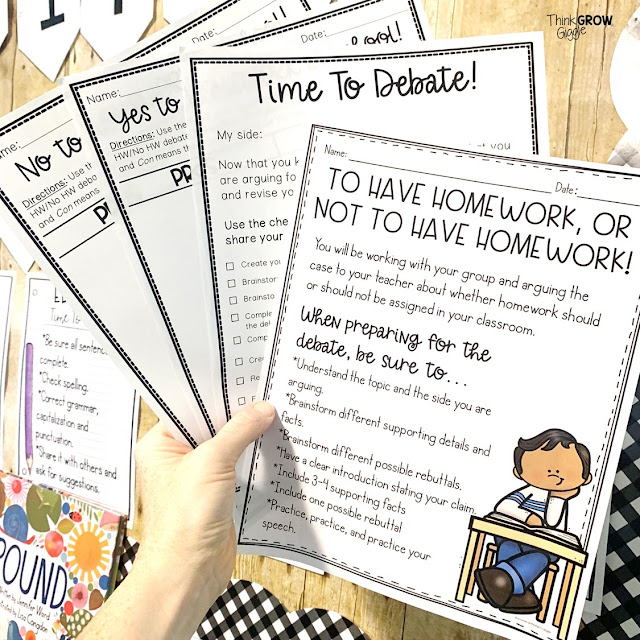Election Day activities for upper elementary students bring instant engagement! The kids love learning about what is happening outside the classroom, like Election Day, voting, and the election process. These non-biased activities are a great way to bring the upcoming presidential election, voting, the Electoral College, and democracy into your upper elementary classroom!
How can I teach Election Day 2024 and all things Democracy in my upper elementary classroom?
Teaching students about elections and the democratic process is one of my favorite units to teach! Students love learning about real-world topics such as elections, especially during a presidential election year. As exciting as it is to bring in real-world events, we must remember to teach about the election process in the United States rather than about specific candidates.
Below are seven creative activities you can incorporate into your classroom to help your students understand elections, the electoral process, and the importance of voting in the United States of America.
How to Teach the Election Process to Elementary Students
1. Build Background Knowledge
The election process is a tricky concept!
Kick off your Election Day learning by watching one of these kid-friendly videos to build background knowledge for your students. Of course, watching one video is not enough for kids to understand everything about the election process, but it is a great starting point and easy to sneak in during snack or after recess! Have your students take notes about the videos you watch to hold them accountable!
Try one of these:
✅Race to Win (an interactive game)
✅Elections and Voting (7 minutes)
✅Election Day for Kids (5 minutes)
Kindly Note: As with any video you show your students, please preview the video to ensure that they are appropriate for your cohort of students.
Grab the free Election Day notetaking pages and bonus printables HERE.
2. Dive into the Content
Helping students learn about citizenship and democracy is important for teaching about the election process. When teaching democracy, citizenship, and the election process to upper elementary students, I always introduce these concepts in a structured order that builds on students' understanding as they learn about the complex system of the election. Try this scope and sequence to help guide your instruction and increase student understanding:
As students grasp these ideas, they can delve into how elections work, including the importance of voting and the different roles within an election, such as candidates and voters. By following this sequence, students can develop a comprehensive understanding of how democracy functions and their role within it as future citizens.
3. Hold a Mock Election
A mock election is an engaging way for students to experience the voting process firsthand. Start by selecting a simple topic for the election, such as voting for the class's favorite snack, animal, or book. Provide students with ballots, set up a voting booth, and have them cast their votes in a ballot box. After counting the votes, announce the winner and discuss the importance of voting and how the process mirrors real-life elections. This activity is engaging and teaches students about decision-making and the impact of their choices.
💡Teacher Tip: Hold your own presidential election by using different characters you have met in the books that you have read aloud to your class. This is a great way to dive into character traits and understanding as you connect it to the election. Have students critically think about which character would make the best president and why! Grab the supplies you need HERE.
4. Get Creative
Let your students' creativity shine by having them design campaign posters using any supplies you already have in your classroom! Each student can choose an issue related to their school to promote, such as longer recess time. Provide materials like markers, colored pencils, and paper, and encourage students to develop slogans and visuals that support their issue. This activity helps students understand how campaigns work and the role of persuasive communication in elections.
Looking for more creative ideas? Here are a few of my favorites!
✅ Word Search
✅ Coloring Pages
✅ Directed Drawing
5. Read a Book
The best conversations about elections and democracy in my classroom always come from reading aloud picture books!
Don't worry; you do not need to scour the internet for excellent and appropriate picture books to read to your class this election day; I have compiled my favorites HERE!
6. Hold a Debate
Hold a class debate on a topic relevant to your students, such as Should Homework be Assigned? Divide the class into two groups, each representing a different viewpoint. Give students time to prepare their arguments, then hold the debate. Afterward, have a class discussion about how debates help inform voters about different perspectives before they cast their votes. This activity teaches students the importance of listening to others and considering multiple viewpoints.
Not sure how to get started on holding a class debate? Head to this blog post for a step by step approach!
7. Electoral College Map Coloring
To help students understand how presidential elections work in the United States, have them color a map of the United States based on which states voted for which candidate. Provide them with a list of states and the winning candidates for each state. Using red and blue crayons or colored pencils, students will color each state accordingly. This activity not only helps students grasp the concept of the Electoral College but also gives them a visual understanding of how different regions of the country can vote differently. You can grab the map for FREE HERE.
Ready to dive into all things election? These election-themed activities will engage your students this November! These activities teach the basics of elections and encourage critical thinking, creativity, and civic engagement. Participating in these hands-on activities will give your students a deeper understanding of democracy and the importance of being an informed and active in the electoral process.
Happy teaching!
You will also love reading:
*affiliate links: “Think Grow Giggle is a participant in the Amazon Services LLC Associates Program, an affiliate advertising program designed to provide a means for sites to earn advertising fees by advertising and linking to Amazon.” (source: Section 5)




























































